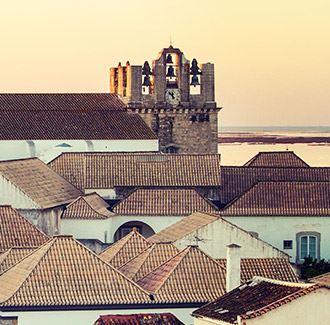
Tipically Portuguese Flavors
Served in cafes and restaurants throughout the country, pastel de bacalhau is a fried salty and soft codfish cake, whose origin and paternity are disputed by different regions. From North to South, there are, however, three mandatory ingredients in the cooking of this delicacy: codfish, potatoes and chopped parsley. Usually served cold and devoured in two bites, its deliciousness crossed the Atlantic Ocean, being equally popular in Brazil, where it’s served hot and known as bolinho de bacalhau.
The undeniably northern pastel de Chaves is a consistent flaky dough pastry shaped like a half moon and filled with mince. Broa de Avintes is also northerner and consists of a rich corn bread that tastes particularly well if spreaded with butter or sided with a slice of chorizo, farinheira (pork sausage made with flour and spices) and linguiça (spicy pork sausage).
The smoked sausage industry is of great tradition in the whole country. For those who love these foods, Alheira de Mirandela is a highly recomendable dish. It’s a smoked sausage of jewish origins, made with poultry meat and lard that tastes delicious when fried and sided with boiled vegetables, salad, french fries and a fried egg.
Francesinha is a typical dish from Porto and also rich in smoked sausage products. It’s a sandwich filled with linguiça, sausage, ham and a steak, wrapped in melted slices of cheese. The experts say that the best part of this calorie bomb is actually the sauce that submerges the sandwich. Baked with tomato, beer and hot sauce, it’s to die for!


Lisbon’s Festivities honour Saint Anthony of Lisbon, the patron saint of the city, and have a mandatory ingredient: the grilled sardine, usually eaten by the street, sided with bread and folk music. Amêijoas à Bulhão Pato is another tasty snack — clams cooked with garlic, olive oil and coriander. This typical dish from the coast-center region is unmissable and specially tasty as an appetizer and/or a snack to have with a beer.
The codfish is another nutriment cooked throughout the country, following recipes named after the regions where they were created. Bacalhau à minhota is a good example of that, with codfish slices served after being fried in the same oil that cooks the siding french fries.


Dishes of flesh, bone… and other parts
Portuguese meat specialties are overall substantial and in some cases recommended for corageous palates only. The lisbonian dish iscas com elas is a good example of such characteristics — pig liver strips marinated in white wine and vinegar, fried in lard and sided with boiled potatoes. In the North of the country, the typical Tripas à moda do Porto is also a nourishment only suitable for “brave people”, since it utilizes the guts of several animals in its cooking; this dish was created 600 years ago.
Another good example of “tough” northern food is the specialty rojões à minhota: boneless but greasy chops of pork, whose most famous garnishes are sarrabulho rice or sarrabulho mash, both of them cooked with blood. Pork is also the main ingredient of feijoada à transmontana, an original from the locality of Candedo in which the flesh is used from the pork’s ear… to its foot.

Portuguese meat specialties are overall substantial and in some cases recommended for corageous palates only. The lisbonian dish iscas com elas is a good example of such characteristics — pig liver strips marinated in white wine and vinegar, fried in lard and sided with boiled potatoes. In the North of the country, the typical Tripas à moda do Porto is also a nourishment only suitable for “brave people”, since it utilizes the guts of several animals in its cooking; this dish was created 600 years ago.
Another good example of “tough” northern food is the specialty rojões à minhota: boneless but greasy chops of pork, whose most famous garnishes are sarrabulho rice or sarrabulho mash, both of them cooked with blood. Pork is also the main ingredient of feijoada à transmontana, an original from the locality of Candedo in which the flesh is used from the pork’s ear… to its foot.
Finger Licking Pastry
Besides the sugar, which is imperative, a good part of the most traditional and appreciated Portuguese pastry can’t go without one particular ingredient: eggs. They are so important, that even baptized the ovos moles (soft eggs), an original from the city of Aveiro consisting of a host shell and a very sweet filling. Eggs also provide beautiful shades of yellow to Lisbon’s pastéis de Belém, Sintra cheese tarts and Azeitão pies (typical from the Setúbal region).
The sweets of monastic origin due to be eaten with a spoon are equally sugary, delicious and plentiful in eggs. Amongst such delicacies are Alfeizerão soft cake (Alcobaça region), sericaia from Alentejo, always tastier if sided with a prun from Elvas, and Abade de Priscos pudding, typical from Braga and cooked with an unusual ingredien — little chops of lard.








